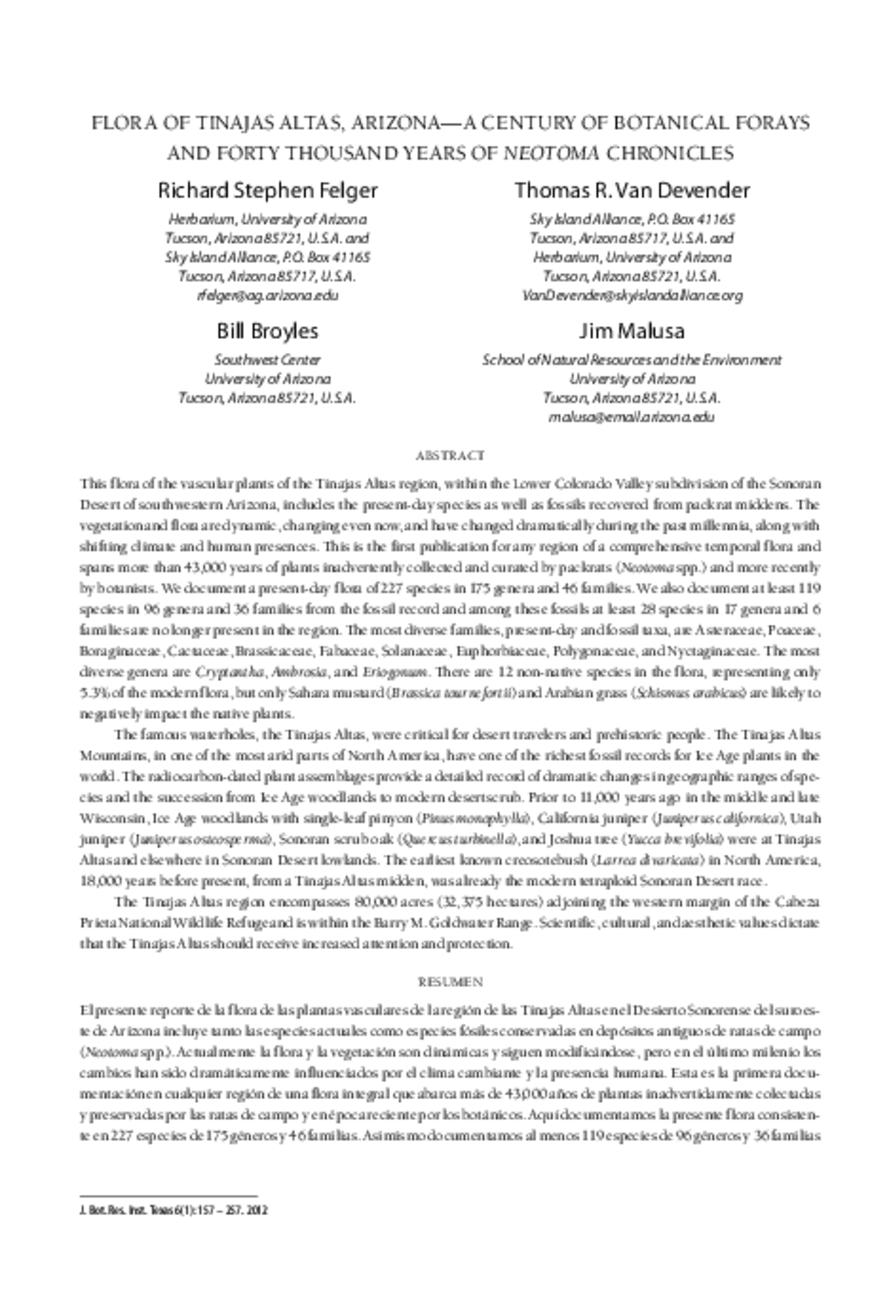Flora Of Tinajas Altas, Arizona - A Century Of Botanical Forays And Forty Thousand Years Of Neotoma Chronicles
This flora of the vascular plants of the Tinajas altas region, within the Lower colorado valley subdivision of the Sonoran desert of southwestern arizona, includes the present-day species as well as fossils recovered from packrat middens. The vegetation and flora are dynamic, changing even now, and have changed dramatically during the past millennia, along with shifting climate and human presences. This is the first publication for any region of a comprehensive temporal flora and spans more than 43,000 years of plants inadvertently collected and curated by packrats (Neotoma spp.) and more recently by botanists. We document a present-day flora of 227 species in 175 genera and 46 families. We also document at least 119 species in 96 genera and 36 families from the fossil record and among these fossils at least 28 species in 17 genera and 6 families are no longer present in the region. The most diverse families, present-day and fossil taxa, are asteraceae, Poaceae, Boraginaceae, cactaceae, Brassicaceae, Fabaceae, Solanaceae, euphorbiaceae, Polygonaceae, and nyctaginaceae. The most diverse genera are Cryptantha, Ambrosia, and Eriogonum. There are 12 non-native species in the flora, representing only 5.3% of the modern flora, but only Sahara mustard (Brassica tournefortii) and arabian grass (Schismus arabicus) are likely to negatively impact the native plants.
The famous waterholes, the Tinajas altas, were critical for desert travelers and prehistoric people. The Tinajas altas Mountains, in one of the most arid parts of north america, have one of the richest fossil records for ice age plants in the world. The radiocarbon-dated plant assemblages provide a detailed record of dramatic changes in geographic ranges of spe- cies and the succession from ice age woodlands to modern desertscrub. Prior to 11,000 years ago in the middle and late Wisconsin, ice age woodlands with single-leaf pinyon (Pinus monophylla), california juniper (Juniperus californica), Utah juniper (Juniperus osteosperma), Sonoran scrub oak (Quercus turbinella), and Joshua tree (Yucca brevifolia) were at Tinajas Altas and elsewhere in Sonoran desert lowlands. The earliest known creosotebush (Larrea divaricata) in north america, 18,000 years before present, from a Tinajas altas midden, was already the modern tetraploid Sonoran desert race.
The Tinajas altas region encompasses 80,000 acres (32,375 hectares) adjoining the western margin of the cabeza Prieta national Wildlife refuge and is within the Barry M. goldwater range. Scientific, cultural, and aesthetic values dictate that the Tinajas altas should receive increased attention and protection.

